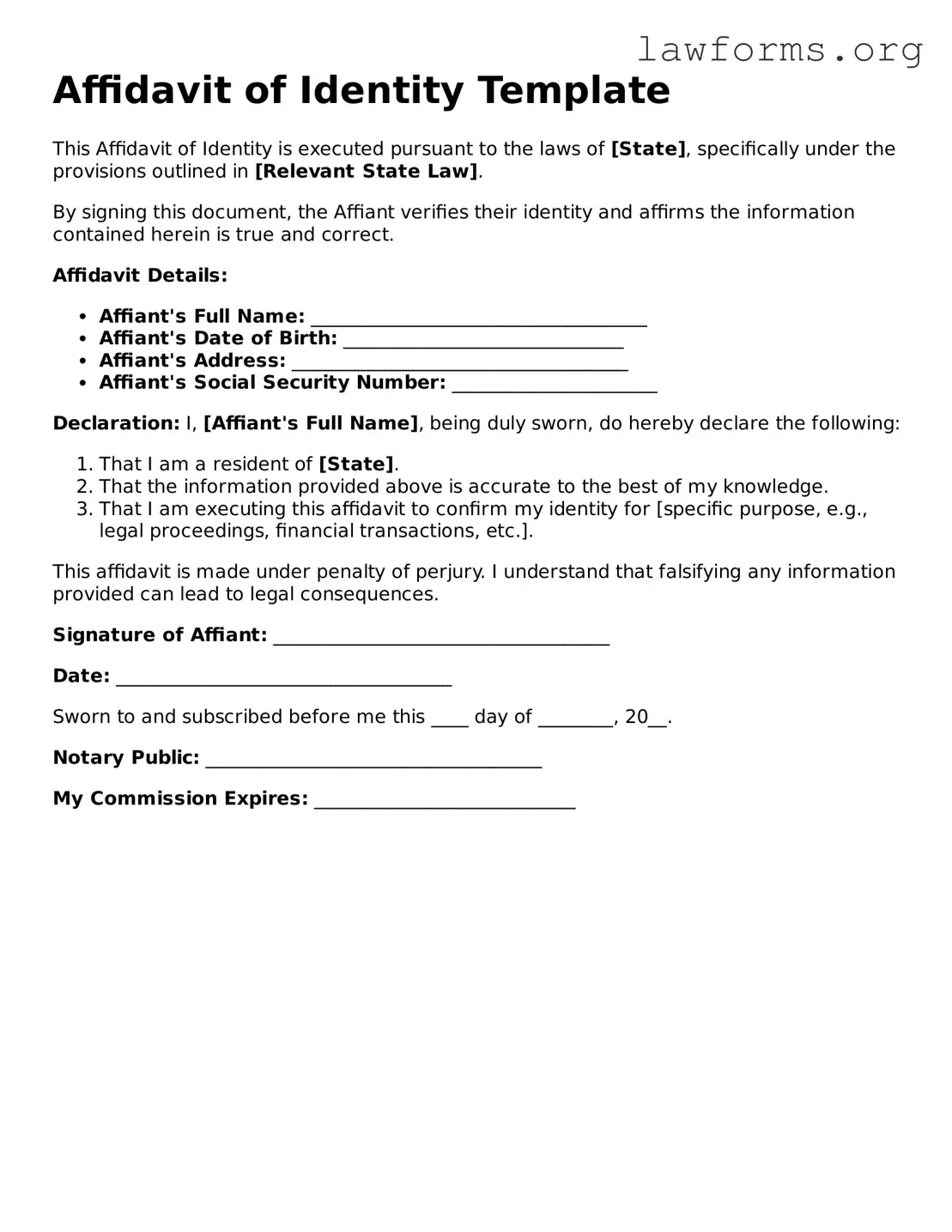Affidavit of Identity Template
This Affidavit of Identity is executed pursuant to the laws of [State], specifically under the provisions outlined in [Relevant State Law].
By signing this document, the Affiant verifies their identity and affirms the information contained herein is true and correct.
Affidavit Details:
- Affiant's Full Name: ____________________________________
- Affiant's Date of Birth: ______________________________
- Affiant's Address: ____________________________________
- Affiant's Social Security Number: ______________________
Declaration: I, [Affiant's Full Name], being duly sworn, do hereby declare the following:
- That I am a resident of [State].
- That the information provided above is accurate to the best of my knowledge.
- That I am executing this affidavit to confirm my identity for [specific purpose, e.g., legal proceedings, financial transactions, etc.].
This affidavit is made under penalty of perjury. I understand that falsifying any information provided can lead to legal consequences.
Signature of Affiant: ____________________________________
Date: ____________________________________
Sworn to and subscribed before me this ____ day of ________, 20__.
Notary Public: ____________________________________
My Commission Expires: ____________________________
